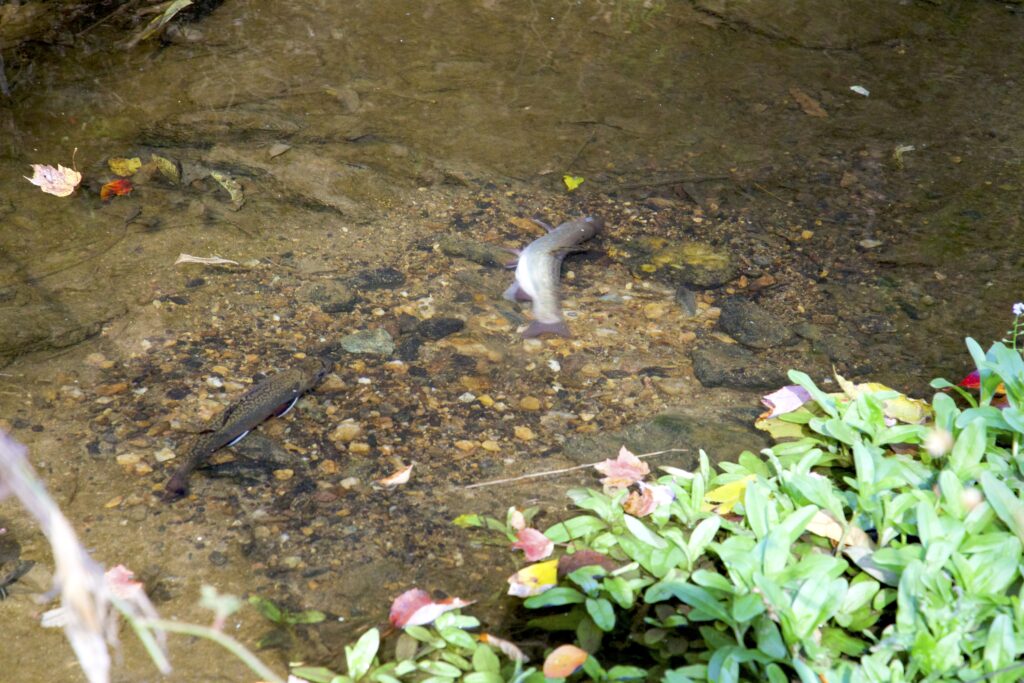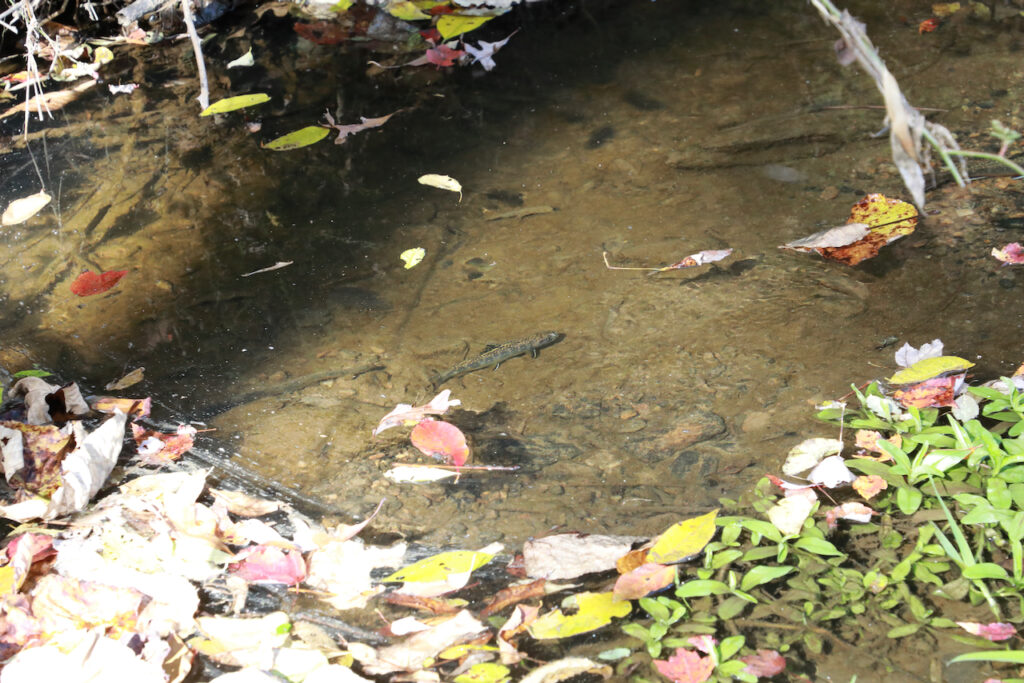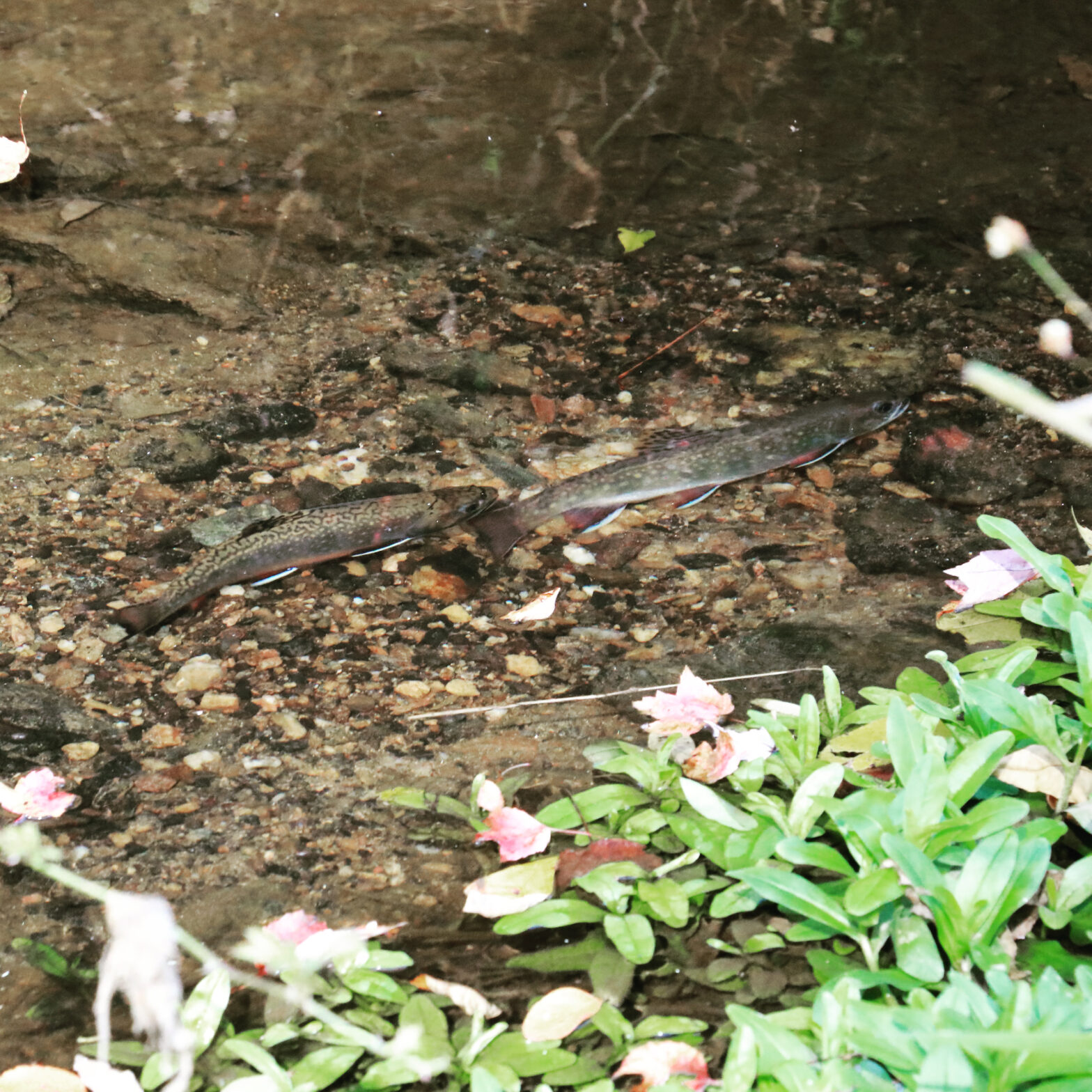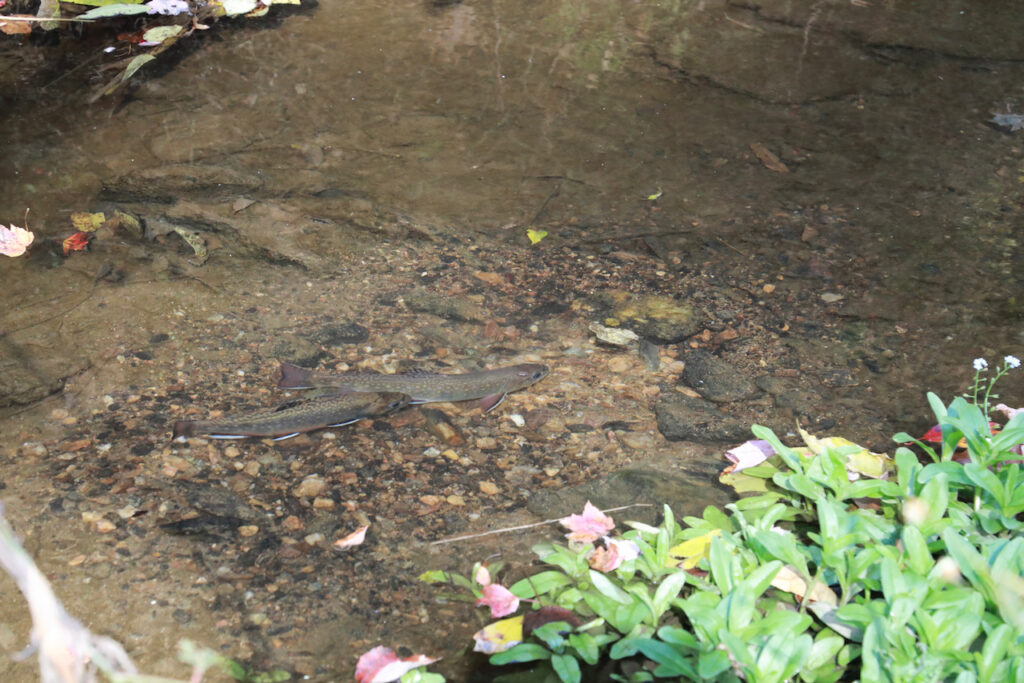
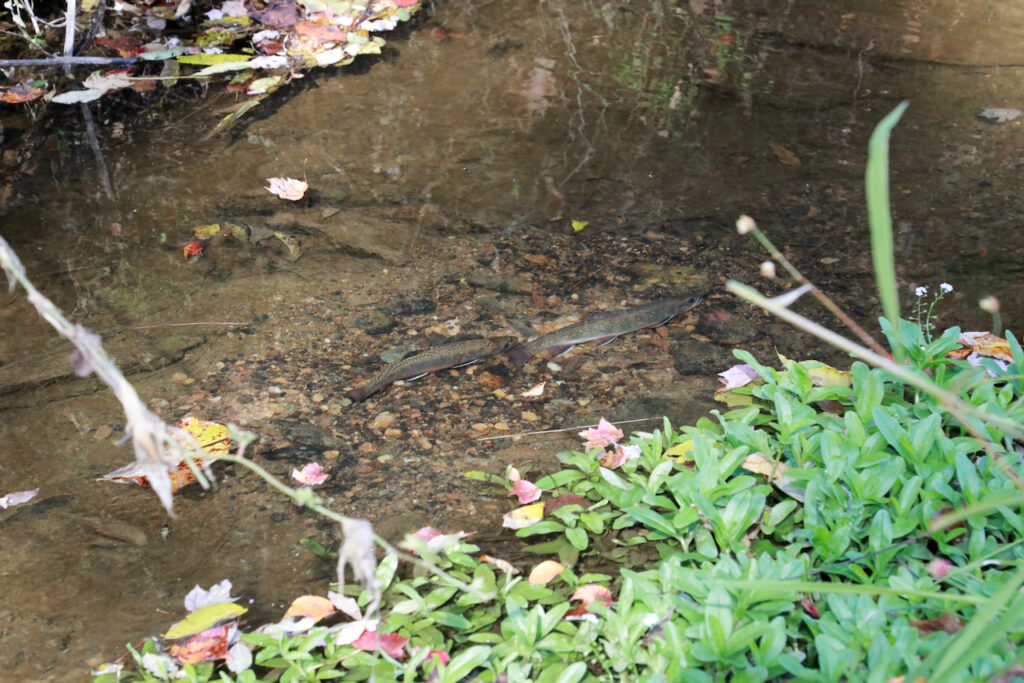

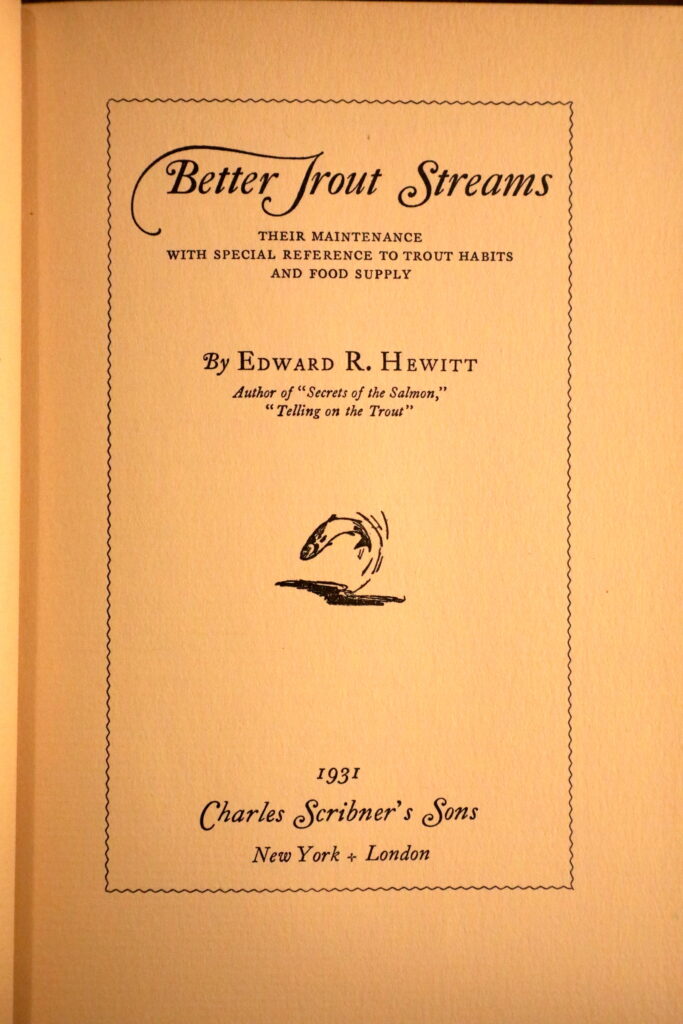
“It has been determined from these studies that streams under seven feet in width are more than twice as rich as wider streams over seven feet in width.” – Ed Hewitt, Better Trout Streams
I completely agree with Hewitt’s findings regarding the the sub-seven foot rule and corresponding biohealth. It started five years ago when a length of tributary belonging to a blue ribbon trout stream in North Central Maryland came under our ownership. In fact it was a fortuitous accident; the stream was behind a half acre spring-fed pond that my attention was first so occupied by. Of course the house, barn, and outbuildings typical of the colonial era homestead held the most weight in the deal, but secretly I had my eye on the pond and deer hunting acreage of the land parcel. I got lucky, my wife was the brains behind the acquisition. We bought the property in early Fall 2017.
I have been drawn to moving water all my life. I have examined, compared, contrasted, and juxtaposed all types of it and as a result became most familiar with the smaller “broken blue line” streams or brooks that are so represented on digital maps we now utilize the most. Now I happen to own one. It’s my study and practice; my object of thought and experiment, a body of water that I hold absolute nearest and dearest to my being. I learned an incredible amount about entomology and the dynamics of water. Hydrodynamics, thermodynamics, kinetic energy, laminar flow; all were on display to be observed and recorded. The scale was small but the application base extends to all lotic environs.
“Of course the kind of geological formation in which the watershed is situated exerts a most profound influence on the character of the stream itself and its capacity to hold and feed trout.” – Ed Hewitt, Better Trout Streams
Our little brook has a geological composition mostly granite in origin with other igneous rock formations being secondary. However what makes this area so interesting is the proximity to the “limestone belts” which pass above us in the northwesterly direction. Remnants and residual broken down limestone formations are present in the geology by way of small packets and pockets of alkalinity. Some springs issuing from the earth are acidic in nature while some a few hundred yards away issue as alkaline or base. Some converge to produce an overall consistent pH of just under 7; our small stream is representative of this geological composition by way of insect life and specific plants which thrive in this ecosystem.
How can my small stream be so rich in aquatic insect life but seemingly be devoid of fish? This was the question that needed answering and once the answer presented itself in one way or another, how could I resolve these issues to populate and some day even propagate trout in this small creek tributary. I read Ed Hewitt’s Better Trout Streams but under the simple pretense that I enjoy his previous books, such as Telling on the Trout. So much indeed that it naturally followed that I read all Hewitt’s works. When I revisited Better Trout Streams the plan for rehabilitating my little stream became clear. There were three main deficiencies that needed attention, but before I get in to these I would like to say I highly suggest reading Better Trout Streams as it is not only documented empirical experience but it comes from a place and knowledge base that the modern angler gets very little insight about and usually have even less involvement. The beauty of Hewitt’s work is the fact that it is almost a century old and in cases where certain natural properties are present the teachings can be practically applied resulting in a stream healthy enough to sustain and produce trout. That is just what I did to our small tributary stream.
Sunlight, pools, and spawning gravel were what seemed to be truly missing from my practice of a stream. It sounds so simple to say that in a single sentence but it took roughly four years to put the three pieces of information together in such a way as to make the water attractive to trout. Multiflora rose along with other naturalized or wild roses banked the entire northern side of the stream, behind is a continuous steep grade that issues small springs which provide a thermally consistent year-round inflow of water. Opening the stream up to sunlight happened by accident, my initial goal was to cut back the brambles and thorns because the autumn leaf litter would get caught within overhanging thorned branches and stay until they usually decomposed instead of being washed down stream as part of the normal cyclical clear-out. It was too much of a good thing, aquatic insects (and more) do need and depend on the leaves for nourishment and it is an important part of the riverine biosystem. However, too many leaves just like too much of anything can be of detriment. In clearing some of the riparian environment on that north side of the stream it opened up the stream bed to sunlight which greatly impacted all facets of stream life toward the net positive.
Oddly enough one could almost classify the stream as being all riffles. It was unusual because the footprint is of the meandering s-curve type lotic environments which are most common of slower moving waters. It was as this stream was on the threshold of what could be considered and mechanically accomplished as a meander or s-curve type. By adding pools in the form of underpinning logs perpendicular to the natural flow, the stream excavated good hiding and holding spots for potential fish directly downstream. Five small dams/ weirs were constructed by using logs native to the area- long strait logs of black locust.
In spring of our third year slower water became part of my small stream’s anatomy; between and connecting riffle to pool, steady water of consistent speed and depth were now available thanks to time and our small weirs. Missing was gravel of a specific type and diameter for spawning. This being a headwater tributary as well as brook trout habitat, we needed to supply the stream with stones and gravel proportional in scale to the needs of the native brookies. Like the last piece of a puzzle being put in to place to reveal the grand design, as soon as the last of the gravel was deposited in to the stream via half-filled five gallon buckets we began to see some activity of fish being present. At first it was that flight and startle of a shadow and bow wake moving away from your position with speed and determination, but it was not until October of this year – the 14th to be exact – that we saw what we had been always hoping for. The main goal of them all: a redd in the process of being excavated. (Much other work that I am not going to delve in to here was accomplished ie. removal of old cattle fencing, bamboo debris, and increasing inflow from springs and seeps by the clearing of silt/ runoff.)
And what a beautiful redd it was. Such color and contrast of the river bottom. Real work being executed, primordial work that has been in continual perpetuity for millennia. I took this venture seriously, as serious as I take all my fishing. This is and was a display of our small scale conservation efforts. Salvelinus Fontinalis amazes me. Its life history fascinates me. Its beauty is stunning and its delicacy is absolutely apparent in look and to the touch. In the central northeast we need to be mindful of this fragility. At the time of this writing I could take you to two different brook trout waters separated by less than half a mile where the fish used to be identical; it was obvious to one who knew what to look for that these fish had similar genetic life histories. Now someone who has no experience with brook trout could notice obvious differences in appearance of the fish from the two streams- one looking healthy and vibrant the other pale and pasty. They feel and act how they look, the latter being a resident of a stream who has 10 houses above their water now. I am a witness to the slow degradation which is unfolding, in time the fish will be gone from this specific water. Im sure of it. In my experience the fish do not just die off; it is a slow increase of thermal stress coupled with increasingly inadequate oxygenation. This results in a slow march toward the ever present threshold of mortality. There may be a day in some not so far away future where the brook trout, the “Aphrodite of the Hemlocks” as the great Ernest Schweibert pays homage to them, are even more scarce than they are presently.
October 17th 2022 my son and I came up on the redd from downstream. We both immediately saw three fish. We took position downstream and crouched low to avoid being seen. The evolutionary reproductive urge seemed to diminish the inherent weariness of these brook trout. The two dominant fish were occupying the rear most redd. The third and smaller brook trout was lagging downstream, constantly speeding up to hover over the rear redd only to be chased back down stream every time by the bigger male fish. This “sneaker” fish, as they are called, was pursuing the rear redd to sneak in and fertilize the female eggs- another inherent evolutionary trait on display. My son and I stood frozen in amazement, he at 7 years of age even knew what we were witnessing was something special. In real time we became aware that this was an event we may never witness again in such close proximity; we were but 8 feet away.
Fortunately I had my camera and the photographs accompanying this blog post show the beauty and successful application of Mr Hewitt’s curriculum passed to us almost a century later. Nature’s route is circuitous; we were able to help these fish come full circle and propagate. Hopefully the eggs will hatch and the piscatorial circle of life can further be pushed in to the future. This has been my greatest achievement regarding my fly angling and within my small efforts of conservation. I am humbled as well as excited to be able to document and share this with fellow naturalists and fly anglers.
“The number of trout in a stream is of course a question of biological balance, if this is not disturbed by outside forces. By far the most important of these factors is man, who has means of removing fish faster than any other agency.”- Edward Ringwood Hewitt (1866- 1957) Neversink River, Catskills NY
Sean Eagan
Degenerate Angler
Autumn 2022
